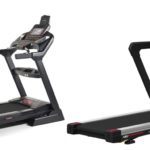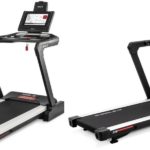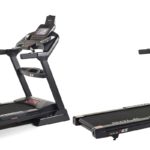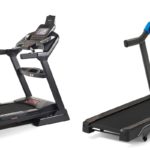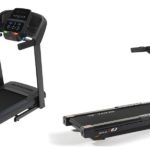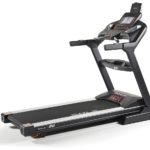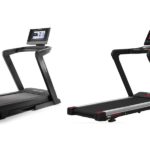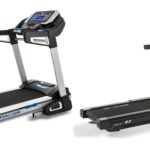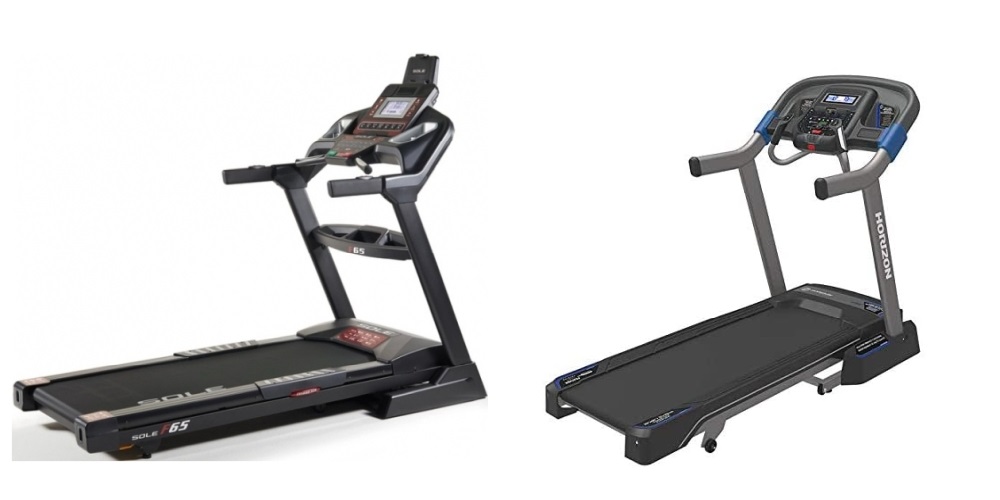
When you’re thinking of getting a treadmill for your home, both Sole and Horizon are popular brands. Each has its own special features and provides treadmills for both beginners and advanced users.
Both brands have built a reputation for quality. However, Sole treadmills are known to be a bit more durable, while Horizon’s are more budget-friendly and easier to connect with third-party fitness apps.
The Horizon offers some entry-level treadmills with small decks suitable only for walking and jogging. On the other hand, even Sole’s most basic model, the F63, has a standard 20”x60” deck and a strong motor suitable for running. Of course, these differences are reflected in the price range: Sole treadmills cost between $1,000 and $5,000, while Horizon’s prices range from $700 to $2,750.
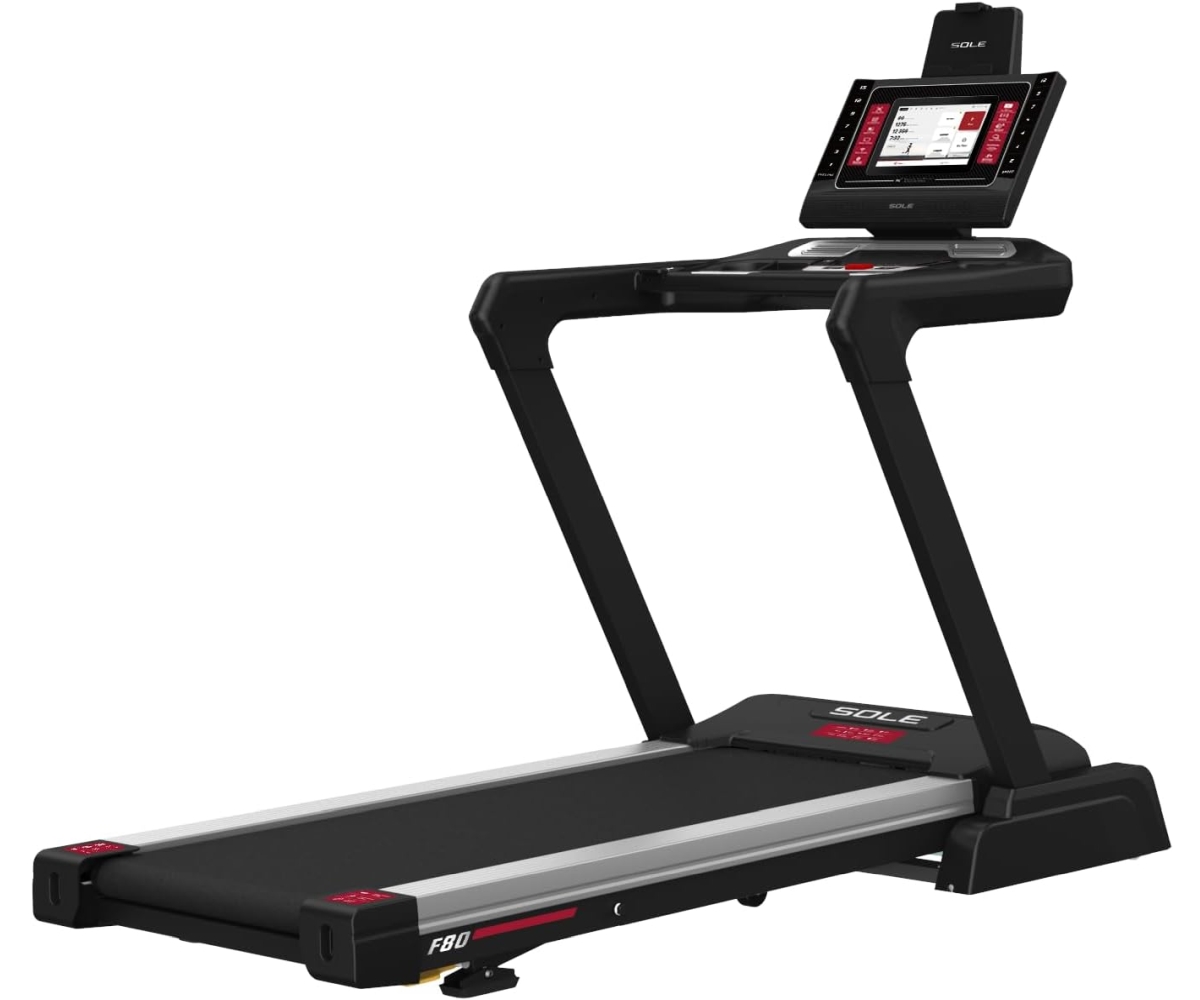
Sole F80
- 375 lbs weight capacity, powerful 3.5 CHP motor
- 12 MPH speed, 22″x60″ running deck
- Good incline range of 15%
- 2.36″ rollers
- Wireless chest strap included
- Easy-to-fold design with transport wheels
Built Quality and Construction Differences
Sole’s hallmark is its large rollers, which, combined with their strong motors, ensure smooth treadmill operation. Their models feature motors ranging from 3.0 HP to 4.0 CHP. Some commercial Sole models even come with very strong commercial-grade AC motors. Sole treadmills are also designed with higher weight capacities, making them ideal for larger users weighing between 325 and 400 lbs.
On the other hand, Horizon stands out with its three-zone cushioning system, specifically designed for runners. The motors in the AT series are very responsive, making them ideal for people who need to change speed and incline quickly—perfect for interval training. As for weight capacity, Horizon models accommodate users weighing between 300 and 375 lbs.
Both brands understand that users appreciate quick speed and incline adjustment buttons positioned outside of the main console, as they can be challenging to access without disrupting user’s pace. Both brands have integrated this feature into their models. However, while Sole has these controls on the side rails—a location favored by many, Horizon positions them on the front bars, close to the contact grips.
Tech & Program Differences
While both Sole and Horizon prioritize construction quality over advanced tech features, offering relatively simpler consoles compared to other brands, there are notable differences.
Firstly, a significant advantage of both brands is that neither requires users to pay for a monthly subscription, unlike ProForm or NordicTrack. Both Sole and Horizon models offer a variety of built-in workouts that should be enough for most users.
Horizon stands out due to its compatibility with third-party apps like Peloton and Zwift via Bluetooth. In contrast, Sole offers fewer integrations, primarily with its own app.
In terms of displays, Horizon’s Go Series (T101 and T202) features mono-color LCD screens, while its Studio Series offers TFT-type color screens that display workout metrics and nothing more.
In contrast, Sole equips its F80, F85, ST90, and TT8 models with touchscreens, while its other models feature basic LCD screens. However, we are witnessing that Sole has begun to replace traditional screens with touchscreens in newer versions. While you can still find the older versions of some of these models with basic displays, they now have different names, such as Sole T80, Sole T85, etc.
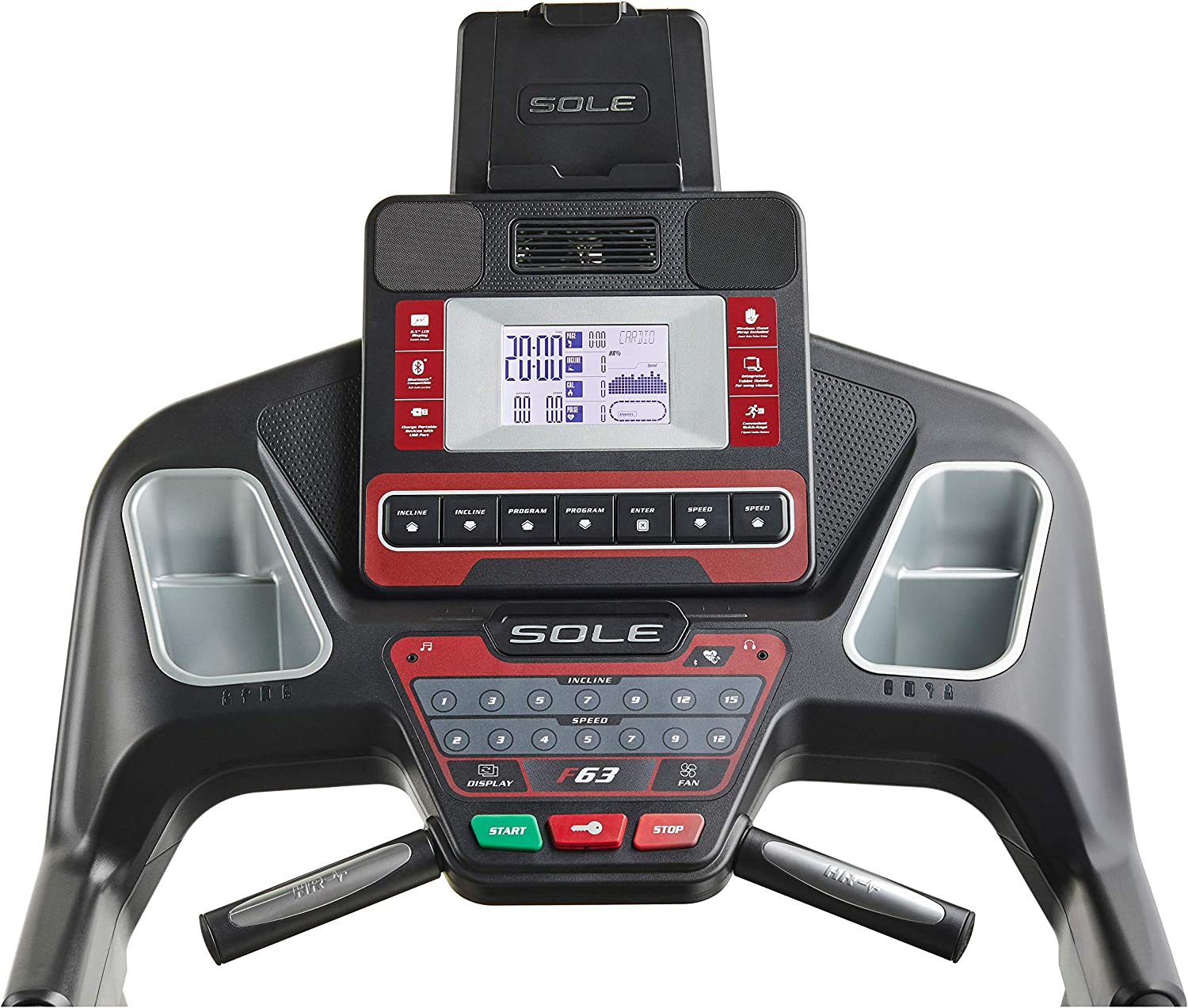
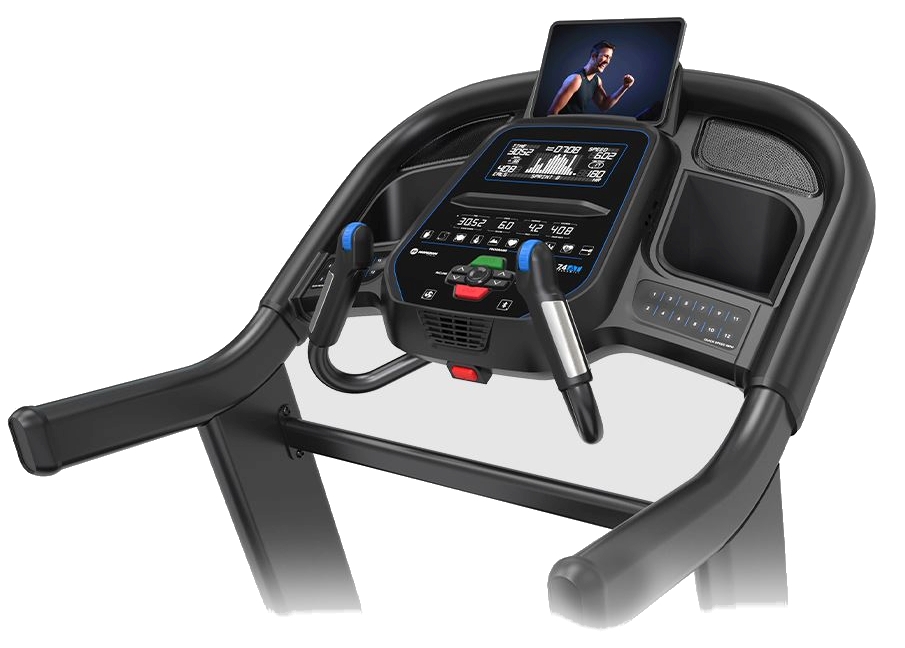
Heart Rate Monitoring
Both Sole and Horizon treadmills come equipped with contact grip heart rate monitors. Sole includes a wireless chest strap with all its models, whereas Horizon provides this only for select models, such as the AT 7.4 and AT 7.8. Additionally, Horizon’s T101 and T202 models do not support wireless heart rate monitor connectivity.
In terms of contact grip heart rate accuracy, Sole treadmills were previously superior. However, the latest versions of Horizon treadmills have addressed this issue, and now they perform well too. Nonetheless, due to the nature of grip sensors, they can never match the accuracy of a chest strap.
Warranty
Both brands are known to honor their warranties without any issues. Horizon offers a 30-day return policy and provides a lifetime warranty on the frame and motor for every model, including the entry-level Go series treadmills. This is a huge plus since most beginner models usually come with short warranties.
Sole also offers a lifetime warranty on the frame and motor, though the ST90 is an exception with its warranty limited to 5 years. They provide a 30-day return window as well. Warranties for the deck, electronic parts, and labor vary between models for both brands.
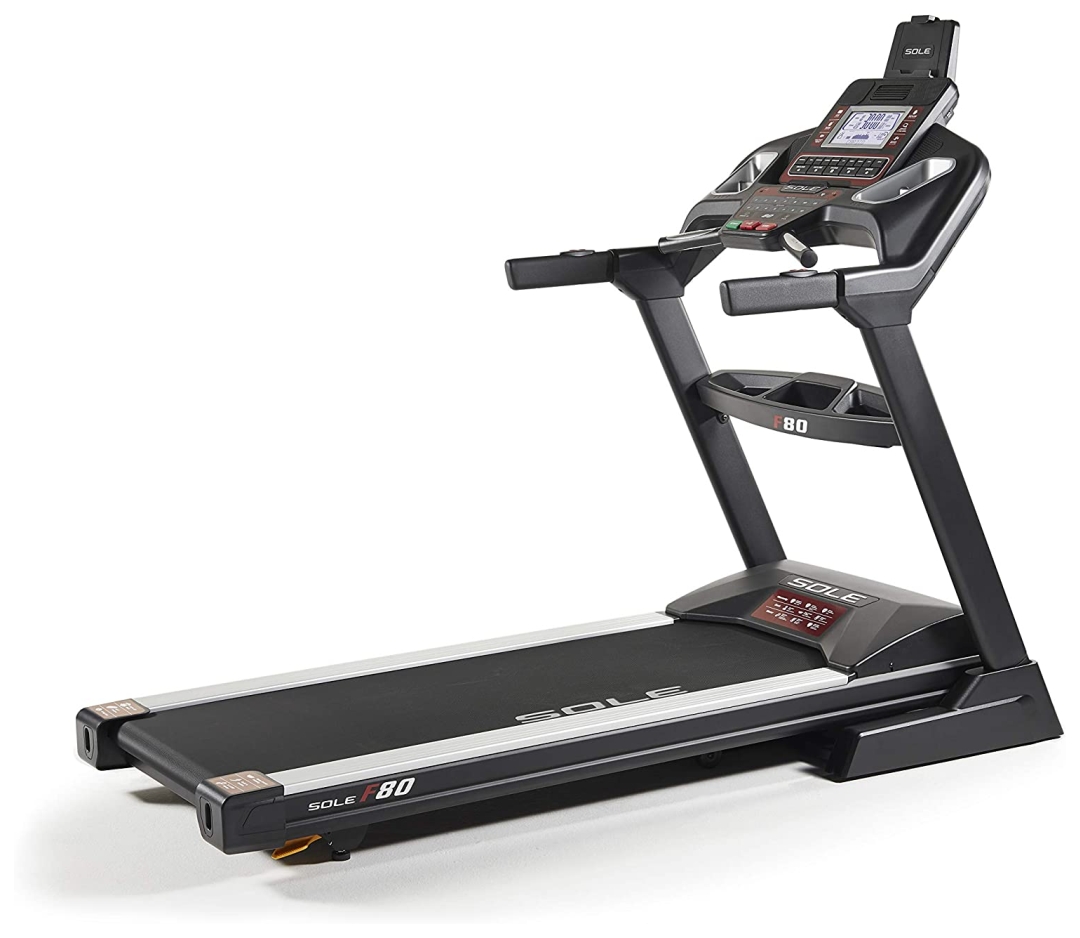
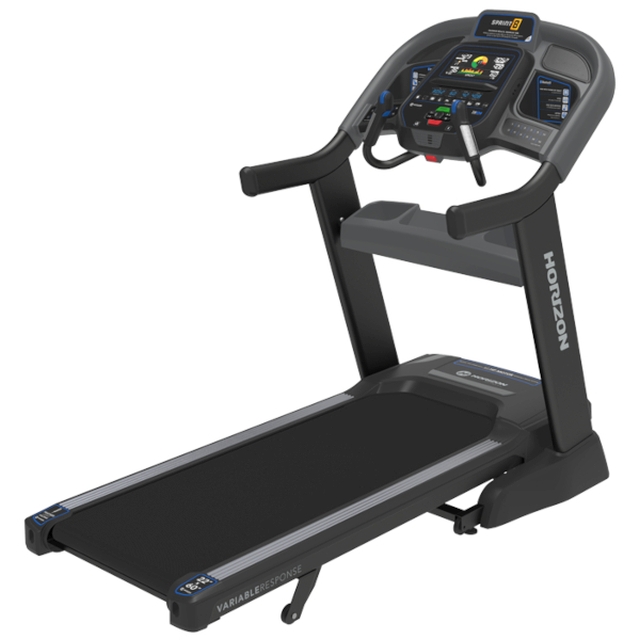
Incline and Decline
Horizon’s incline capabilities vary; beginner models offer up to a 10% or 12% incline, whereas the AT models come with a 15% incline. However, no Horizon models feature a decline capability. Additionally, the incline drive motor in the AT series is both rapid and silent.
Conversely, all Sole models offer an incline of at least 15%, with the TT8 model also featuring a -6% decline capability. The incline system of Sole treadmills is also very silent.
Which One Should You Buy?
Both Sole and Horizon have their own strengths, and it’s likely you’d find a suitable treadmill from either brand. But, to simplify things, let’s see where each one might have a slight advantage based on your personal preferences:
Choose Sole If:
- You’re a serious runner: Sole treadmills feature at least a standard 20”x60” deck and 3.0 CHP motors. Even their basic models are suitable for running unless you’re very tall or exceed the weight capacity of the model. For example, when you compare Sole’s entry model F63 with Horizon’s entry model T101, you can see the gap in motor power, deck size and top speed.
- Durability is a priority: Both brands produce high-quality treadmills but with their larger rollers and stronger motors, Sole treadmills are built to last.
- You’re looking for a commercial-grade machine: Some Sole models come with heavy-duty AC motors, making them suitable for professional settings or intense daily usage.
- You’re a larger or taller individual: Sole’s weight capacities, which go up to 400 lbs., can be more suitable for larger users.
- You want handrail controls like in gym treadmills: Sole’s positioning for speed and incline controls provides a convenient user experience like commercial treadmills.
- A touchscreen display is essential: Sole is progressively integrating smart touchscreens with Android into more of their models, while all the Horizon models come with basic displays.
- Accurate heart rate monitoring: With a wireless chest strap included in all models, Sole provides precise heart rate tracking. Additionally, their contact grip monitors work better than those of most other brands, including Horizon.
- You want the option of decline in workouts: Some Sole models feature a decline, adding variety and an extra challenge to your exercises. Horizon models do not have decline.
Here are the specs for some popular Sole models (updated specifications for the 2023 Sole models):
| Model | Sole F63 | Sole F65 | Sole F80 | Sole F85 |
|---|---|---|---|---|
| Price | See Price at Amazon | See Price at Amazon | See Price at Amazon | See Price at Amazon |
| Running Area | 20″ X 60″ | 22″ X 60″ | 22″ X 60″ | 22″ X 60″ |
| Motor Power | 3 CHP | 3.25 CHP | 3.5 CHP | 4 CHP |
| Incline/Decline | 15 levels | 15 levels | 15 levels | 15 levels |
| Speed | 0.5 – 12 MPH | 0.5 – 12 MPH | 0.5 – 12 MPH | 0.5 – 12 MPH |
| Folding | ||||
| Maximum Weight Capacity | 325 lbs. | 325 lbs. | 350 lbs. | 375 lbs. |
| Display | 6.5″ Back-lit LCD | 9″ Back-lit LCD | 10.1″ Touchscreen | 15.6″ Touchscreen |
| Bluetooth Audio | ||||
| Rollers | 1.8″ Rollers | 2.36″ Rollers | 2.36″ Rollers | 2.75″ Rollers |
Choose Horizon If:
- You want an affordable but high-quality treadmill: Horizon treadmills, with a lower starting price, are ideal for those looking for affordable options.
- You’re primarily into walking or casual jogging: Horizon’s entry-level models are great for walking and light jogging due to their smaller decks and lower top speed.
- You Like easy integration with third-party apps: Horizon treadmills seamlessly sync with apps like Peloton and Zwift, making them tech-friendly.
- You engage in high-intensity interval training: The AT series from Horizon, with its responsive motors and incline drive system, is perfect for workouts that involve frequent speed and incline changes.
- You’re just starting out or are an entry-level user: Horizon’s Go series is not only beginner-friendly but also offers impressive warranties, making it great for starters.
- Decline capabilities aren’t a necessity: If you won’t use decline features in your exercises, Horizon offers models that focus solely on incline options.
Sole vs. Horizon Treadmills: The Final Verdict
Choosing between Sole and Horizon treadmills comes down to your fitness needs and available budget. Both are excellent for home workouts, boasting easy-to-use interfaces with no additional costs—unless you opt to pair them with paid fitness apps, which are entirely optional.
Sole treadmills have a strong motor and are built to last, but you’ll pay more for them. On the other hand, Horizon models can work with different apps and are generally cheaper. Both brands provide generous warranties on the frame and motor, ensuring peace of mind. So, before making a decision, consider the features you desire, your budget, and the available space in your home gym.
